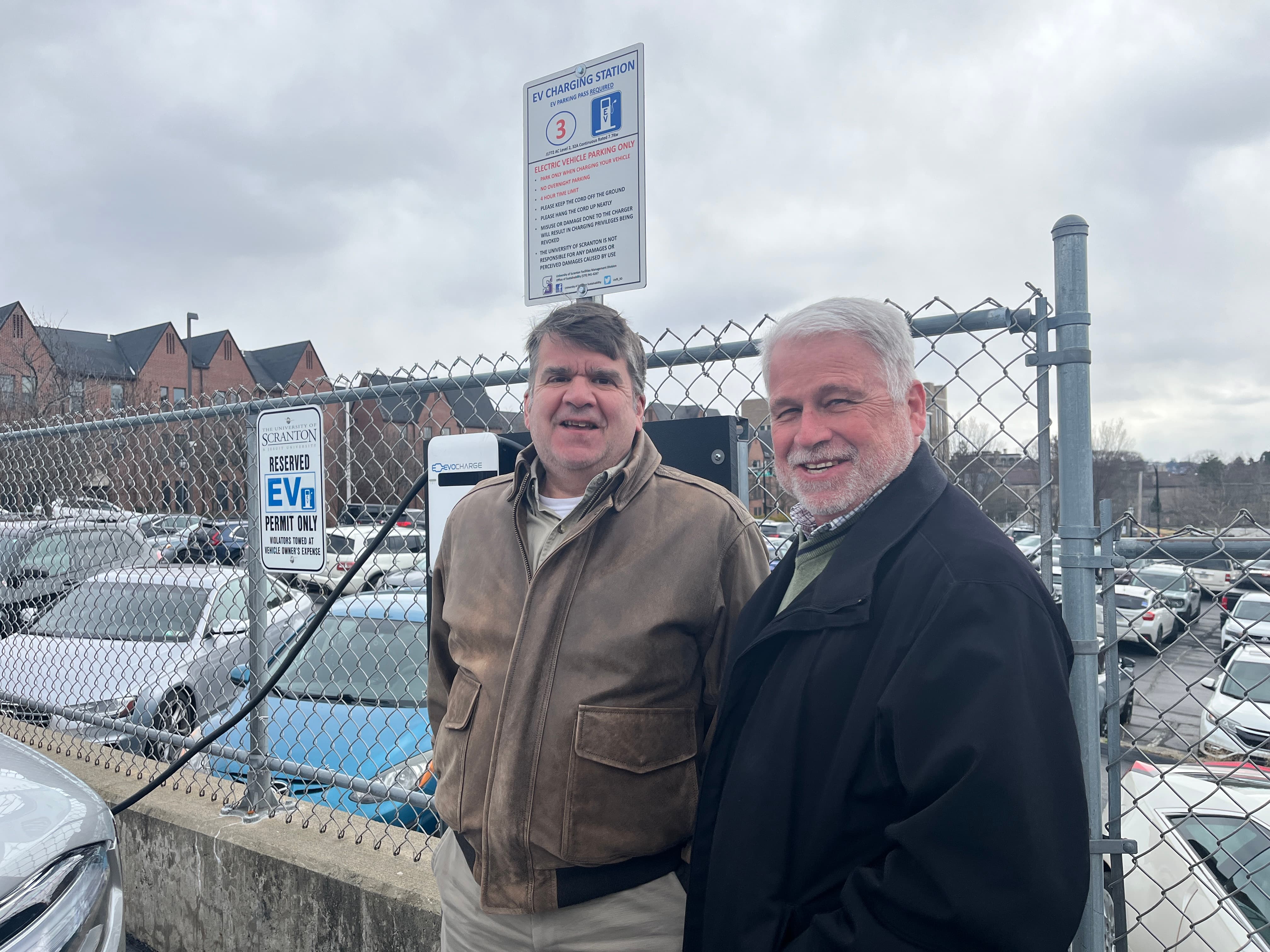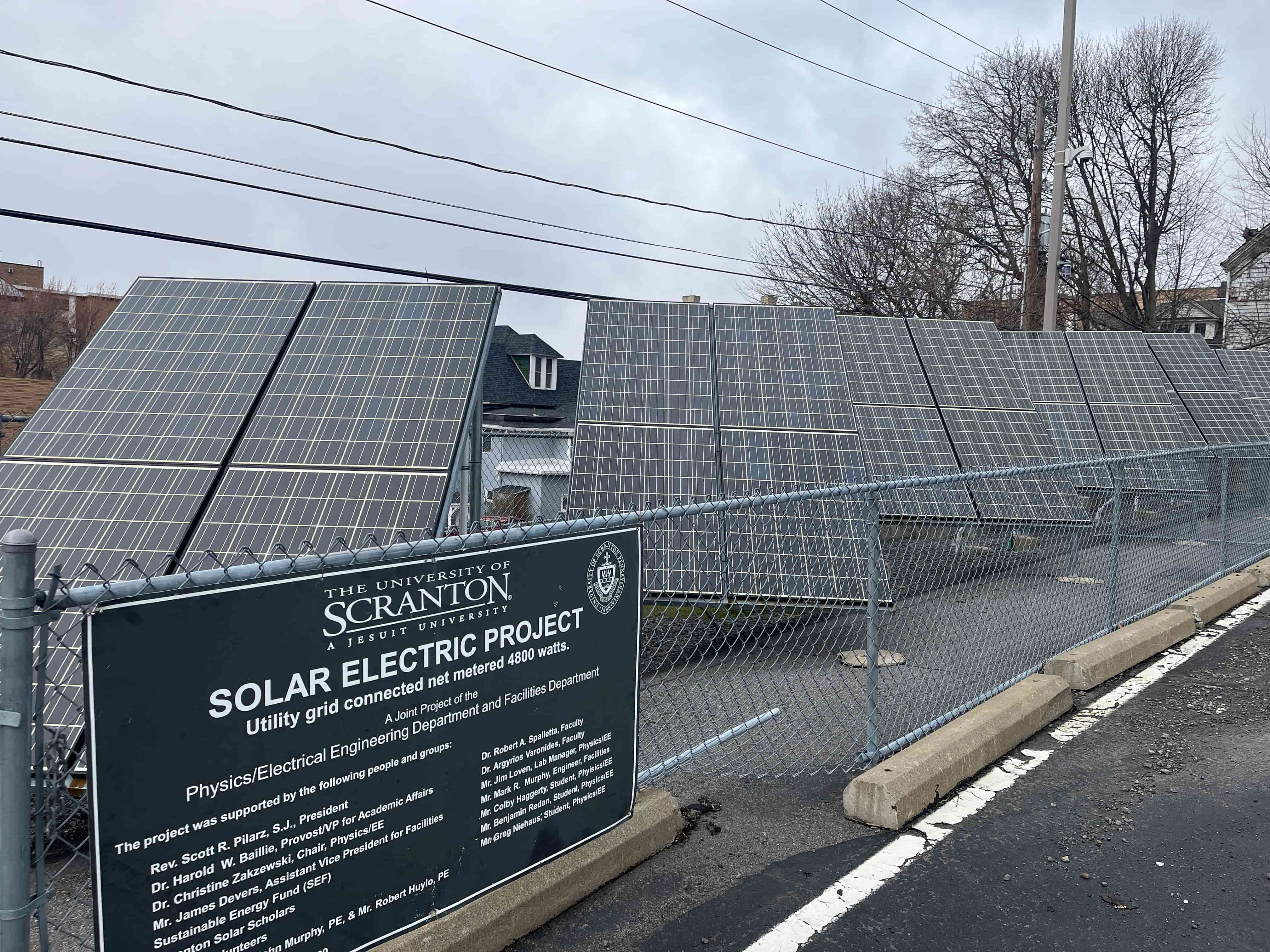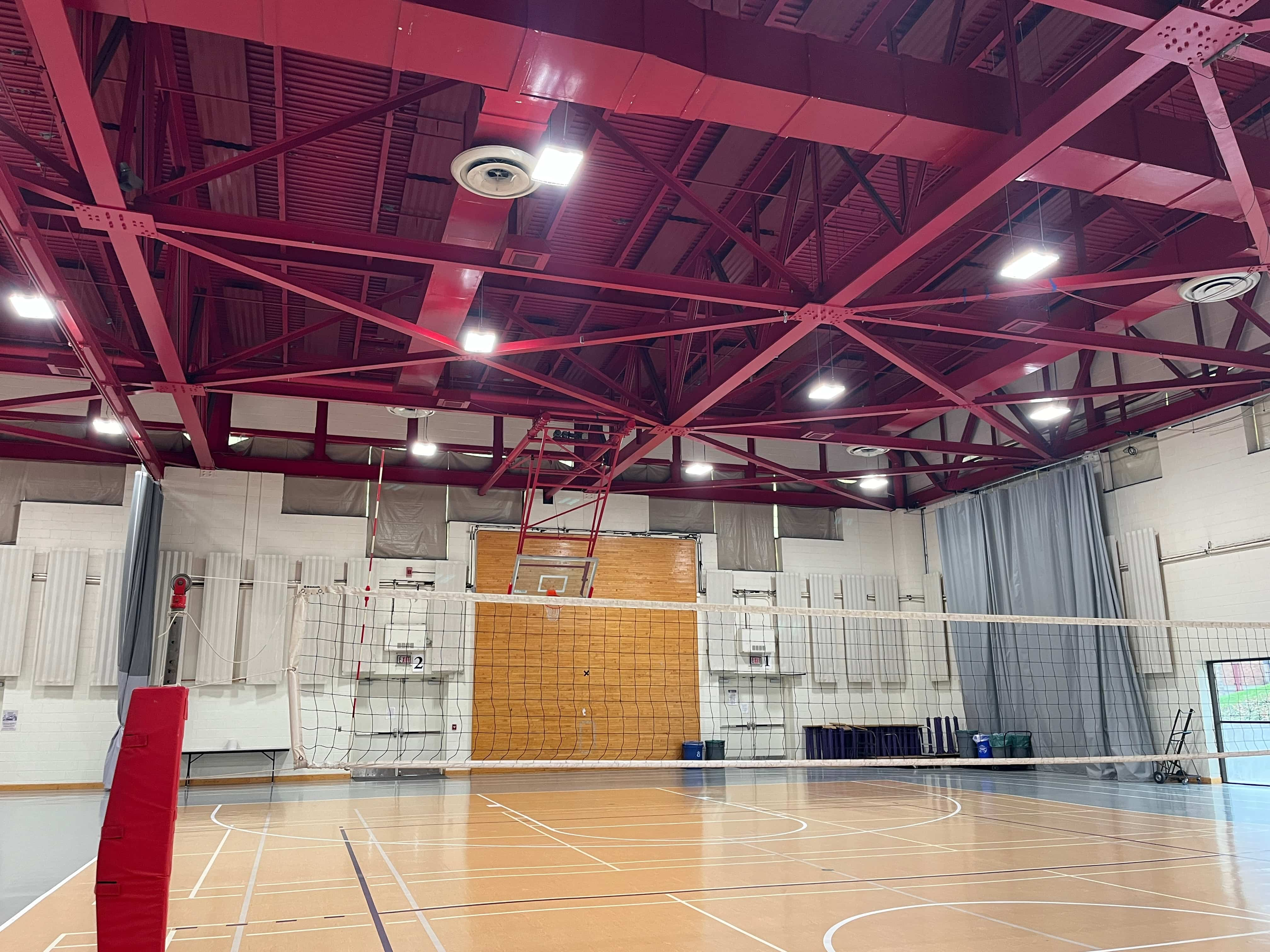An Earth Day Update on University Sustainability Projects

By Ryan Sophabmixay, student correspondent
This month, the University of Scranton's recognition of Earth Day include nearly a dozen events aligned with the theme “Sustainable Living, Caring for Creation.” The University commits to initiatives in support of environmental sustainability year-round, including the purchase of campus vehicle designed to help reduce emissions and noise pollution, installation of energy-saving lighting and efforts to turn excess food and waste into usable soil through composting.
Here is a quick look at what is happening around the campus now.
SUSTAINABLE VEHICLE PURCHASES HELP REDUCE EMISSIONS
Within the past year, the University purchased new campus vehicles to help reduce emissions and noise pollution. The Center of Social and Service Justice received a 2022 Chrysler Pacifica plug-in hybrid, which is America’s first and only plug-in hybrid minivan. The Police Department also received a 2023 Toyota Sienna hybrid minivan to help transport students on and off campus.
The University plans to add nine standard hybrid vehicles on campus for the upcoming fall semester. The vehicles will be distributed between the Admission and Development Departments.
“Fortunately, we’ve been lucky there were no supply chain issues. These vehicles help with noise pollution, and I immediately noticed the quietness from the vehicles,” Mark Cruciani, Director of Purchasing for the University, said.
Along with the hybrid vehicles, six level two charging stations have been installed on campus. Two are located in the parking pavilion and the other four in the Long Center, Madison Avenue, O’Hara and Redington Hall parking lots. See the campus map for locations.
An electric vehicle (EV) permit, a university parking permit and an EV placard must be displayed while using the charging station. EV placards are $100. To purchase an EV placard, contact parking services.

"Another exciting feature being added to our campus is on the 300 block of Madison Avenue," Mark Murphy, Director of Sustainability and Energy Management for the University, said. "The new building is intended to be LEED certified and the building’s roof will hold the campus’s largest Solar Electric project in 2025."
EXCESS FOOD AND WASTE BECOMES USABLE SOIL
The University of Scranton has partnered with ARAMARK and Natural Upcycling to compost excess food, according to Mark Murphy, Director of Sustainability and Energy Management for the University.
Composting had been occurring at the University for three years prior before the pandemic impacted the program in 2020. Afterward, the University began seeking a new service partner and in 2023 restarted the composting program through Natural Upcycling, according to Murphy.
The University collects approximately 1,500 pounds of waste per week at the DeNaples Center. From there, Natural Upcycling handles the composting and turns the waste into usable plant soil.
“A campus our size generates a large amount of lawn and landscaping waste. Our goal is to compost as much of this as possible and track the weight of our compostables,” Murphy said.
“I feel the composting fits in very well with our culture of sustainability on campus. We have many programs that make us a good example to others on ways to be sustainable. We look at our campus as a classroom with sustainable features to share with our students, faculty, staff, visitors and the surrounding communities.”
A future program that may be established at the University is the composting of paper towels.
“I recently observed this practice being performed at another Jesuit university and Natural Upcycling will service this type of program,” he said.
During the fall semester, the University completely upgraded the Byron Gymnasium with LED lighting. The installed lights are estimated to save 46,000 kilowatt hours (kWhs) each year.
CAMPUS LIGHTING UPGRADES CONSERVE ENERGY, CREATE SAVINGS
The University started an energy conservation project last summer. The project consists of installing new lighting in all first-year residence halls, Nevils, Giblin-Kelly, Hafey, McCourt, Lynett, Martin, McKillip, Gannon, and Lavis. In total, after the lighting project the University will save approximately 430,000 kilowatt hours (kWhs) each year.
“The lights have a more modern look and in most cases make the spaces brighter, especially in the student rooms. Maintenance should also notice a big difference in that the lights and lamps should not require repairs for over ten years,” Murphy said.
In the fall semester, the University completely upgraded the Byron Gymnasium to LED lights. Each year, the 60 installed light fixtures are estimated to provide 46,000 kilowatt hours (kWhs) in savings.
“Feedback has been very good. Also, the reduced maintenance and repair costs on the new light fixtures will save a lot of time and money,” Murphy said.
In 2024, the University purchased 20 percent of its electric load from renewable resources and will continue to add 20 percent more each year. In 2028, the University’s entire electric load will be obtained from renewable resources. In addition, the nearly 80,000 square-foot center for workforce development, applied research and outreach, to be built on University-owned property on the 300 block of Madison Avenue will be LEED certified.
"The building’s roof will hold the campus’s largest solar electric project in 2025," Murphy said.






